Crooswijk General Cemetery
Crooswijk General Cemetery (Algemene Begraafplaats Crooswijk) is a cemetery in Rotterdam, the Netherlands.
History
As in many countries, burial within city limits became illegal in Rotterdam in 1827. Crooswijk was taken into use in 1832, although the cemetery had not been finished yet. Due to the outbreak of a Cholera epidemic,[1] burial space was needed quickly. In 1915 a new entrance was taken into use. The old entrance still exists.
When the Walloon church was demolished in 1922[2] the contents of the graves were transferred to the cemetery and a memorial was put in place. When the Laurenskerk was severely damaged by bombing in 1940,[3] many of the graves were also transferred to Crooswijk.
The cemetery is laid out as a park. The cemetery is a general (non-denominational) cemetery. There are sections for casualties of wars, the resistance in the Second World War. There is also a fast-growing Islamic section.
Many of the trees symbolise grief such as Weeping Beech, Silver Birch (Betula pendula var. Tristis, which in Dutch is known as the Weeping Birch), Dutch Elm (in Dutch known as Weeping Elm) and Weeping Willow.
The cemetery is a national heritage site (Rijksmonument) in the Netherlands, as are some of the buildings in the cemetery[4][5][6][7] and are therefore protected.
Notable Burials
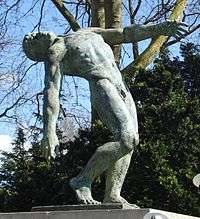
- City and port
- Many well known people from Rotterdam and families who had companies in the port (the "harbour barons") are buried here.
- Politicians
- Gerrit Hendrik Kersten, Minister and politician, founder of the SGP
- Yevhen Konovalets, leader of the Organization of Ukrainian Nationalists
- Hendrik Spiekman, one of the founders of the SDAP
- From the Resistance
- Christiaan Lindemans, double spy
- From the Walloon Church
- Pierre Bayle, Philosopher of French origin
- Gerard Brandt, Dutch preacher and writer
- Pierre Jurieu, Protestant leader of French origin
- War Graves
- 4 pilots of the City of London Squadron, who were killed on May 10, 1940, in a bombing raid[8] on the Waalhaven
- Commonwealth War Graves[9] (maintained by the CWGC), including 11 Polish graves
- Dutch Military Field of Honor (Section P), containing 115 graves.[10]
Location and visit
The cemetery is located in Crooswijk. The new entrance is on Kerkhoflaan (near the junction with Rusthoflaan). The cemetery is open daily. A booklet containing a cultural route through the cemetery is available from the office located at the entrance (also contains a map).
Gallery
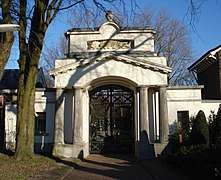 Old Entrance
Old Entrance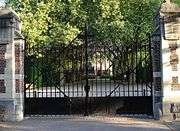 New Entrance
New Entrance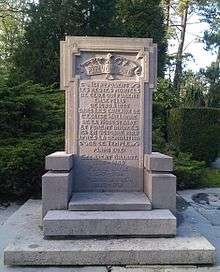 Walloon Church Memorial
Walloon Church Memorial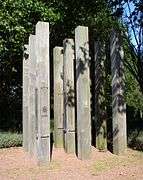 The Dutch East Indies Memorial
The Dutch East Indies Memorial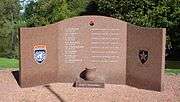 The Korea Monument
The Korea Monument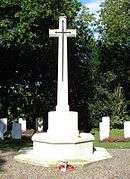
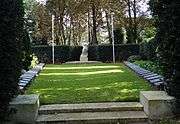 Section dedicated to resistance fighters
Section dedicated to resistance fighters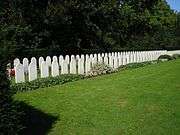 Dutch War Graves
Dutch War Graves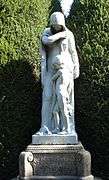 Monument for the German War Dead
Monument for the German War Dead
References
- (in Dutch)Cholera epidemics in Rotterdam in the Municipal Archive
- (in Dutch)The Walloon Church on the NAI website
- (in Dutch)History of the Laurenskerk
- (in Dutch)Crooswijk General Cemetery on the Rijksmonumenten website
- (in Dutch)Listed building in the cemetery Archived 2016-03-05 at the Wayback Machine on the Dutch Cultural Heritage Agency website
- (in Dutch)Listed building in the cemetery Archived 2016-03-04 at the Wayback Machine on the Dutch Cultural Heritage Agency website
- (in Dutch)Listed building in the cemetery Archived 2016-03-04 at the Wayback Machine on the Dutch Cultural Heritage Agency website
- Rickard, J (28 March 2012), No. 600 Squadron (RAF): Second World War
- Crooswijk on the CWGC website
- (in Dutch)Crooswijk on the OGS (Netherlands War Graves Foundation) website
External links
| Wikimedia Commons has media related to Algemene Begraafplaats Crooswijk. |